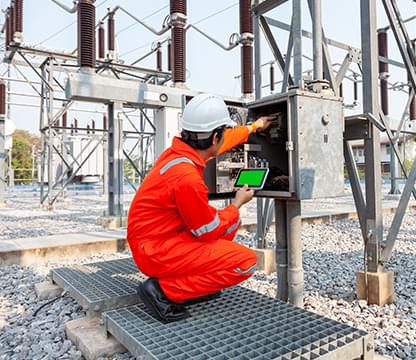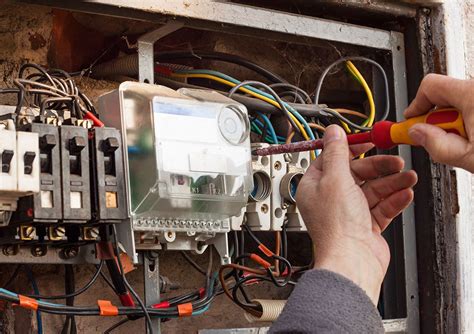Top Tips for Effective Electric System Troubleshooting
Troubleshooting electrical systems requires a methodical method, based in a detailed understanding of electrical concepts and safety and security methods. The subtleties of reliable repairing expand past mere technical knowledge; understanding how to document findings and prioritize security can considerably affect end results.
Understand the Basics
Comprehending the fundamentals of electrical systems is crucial for reliable troubleshooting, as a strong structure permits technicians to identify and fix problems much more efficiently. A comprehensive understanding of electric principles, such as voltage, present, resistance, and power, is essential in recognizing the origin causes of issues. Voltage is the electrical potential distinction that drives existing with a circuit, while resistance opposes the flow of existing, affecting the general functionality of the system.
Familiarity with circuit parts, including resistors, capacitors, diodes, and switches over, is likewise paramount. Each part plays an unique role in circuit actions and can impact performance when malfunctioning. In addition, comprehending collection and identical circuit setups is crucial, as these setups influence the distribution of voltage and current within the system.
Service technicians should be aware of potential dangers, such as shock and brief circuits, to execute risk-free troubleshooting practices. By grasping these fundamental principles, service technicians improve their capability to carry out effective diagnostics and repair services, inevitably leading to improved performance and reliability of electrical systems (electrical system troubleshooting).
Gather Necessary Devices
Efficient troubleshooting of electrical systems calls for the ideal collection of tools to detect and deal with problems accurately. A fully equipped service technician can considerably improve efficiency and efficiency in identifying troubles. Crucial tools include a multimeter, which measures voltage, current, and resistance, permitting specific analyses of electrical elements. Secure meters are additionally useful for gauging present without separating the circuit, making certain security and convenience.
Furthermore, shielded hand devices such as screwdrivers, pliers, and wire strippers are important for safely adjusting electric connections. It is additionally a good idea to have a circuit tester handy to validate the presence of voltage in outlets and cables. For more facility systems, a thermal imaging electronic camera can assist discover overheating elements, suggesting prospective failings.
Follow an Organized Method
Having gathered the suitable tools, the following action in fixing electric systems is to follow a methodical technique. A systematic strategy makes sure that specialists can determine mistakes effectively and precisely, lessening downtime and stopping unnecessary repair services.
Begin by reviewing the system's schematic diagrams and requirements. This entails monitoring each element systematically, beginning from the power resource and functioning in the direction of the lots.
Make use of screening devices, such as multimeters and oscilloscopes, to collect unbiased information about voltage, current, Your Domain Name and resistance at numerous points within the system. This empirical evidence will certainly direct your troubleshooting initiatives and aid to confirm or eliminate potential sources of failing.
In addition, consider ecological factors that may influence the system's performance, such as temperature level variations or moisture access. A comprehensive assessment of electrical wiring, links, and parts will make sure that all possibilities are accounted for.
Record Your Findings
Extensive documentation is vital in the fixing procedure of electrical systems. Accurate records improve the efficiency of determining recurring issues and help with communication amongst employee. Each searching for must be carefully noted, consisting of signs and symptoms observed, examinations conducted, and the outcomes of those examinations. electrical system troubleshooting. This technique not just aids in recognizing the origin of the trouble yet likewise functions as a reference for future troubleshooting initiatives.

Furthermore, keeping a log of components changed or repair services executed is indispensable. This information supports stock administration and can aid analyze the durability and reliability of certain parts.
Inevitably, the paperwork process should be complete yet concise, making it possible for simple retrieval and testimonial - electrical system troubleshooting. By prioritizing detailed documents, professionals can develop a useful understanding base that not just see this site aids in existing troubleshooting however also equips future maintenance efforts, consequently improving total system reliability

Prioritize Safety And Security Procedures
Recognizing the intrinsic risks connected with electric systems is important for ensuring safety and security during troubleshooting. Electric shock, burns, and tools damage are just a few of the possible hazards that service technicians encounter. Prioritizing precaution is not only a legal responsibility yet also a moral imperative that safeguards both the specialist and the surrounding atmosphere.
Prior to starting any troubleshooting task, professionals should don proper individual protective equipment (PPE), including protected handwear covers, shatterproof glass, and flame-resistant clothing. Guaranteeing that the workspace is dry and devoid of mess can substantially lower the threat of accidents. It is crucial to de-energize circuits prior to starting any kind of job, validating that they are not live via the usage of a multimeter or voltage tester.
Developing clear interaction procedures with employee is also vital; this ensures that everyone is aware of possible threats and the standing of the electric system being dealt with. Having an emergency response strategy in location can confirm important in the event of a case. By focusing on security measures, technicians can effectively reduce dangers and foster a more secure work environment.
Conclusion
Reliable electric system troubleshooting counts on a comprehensive understanding of fundamental concepts and a methodical strategy. By gathering essential devices, adhering to organized assessment techniques, and diligently documenting searchings for, the fixing procedure ends up being more effective and dependable. Focusing on security measures makes sure the well-being of individuals entailed and the integrity of the electric system. Implementing these techniques will improve the repairing experience, resulting in quicker resolutions and boosted operational effectiveness in electric systems.